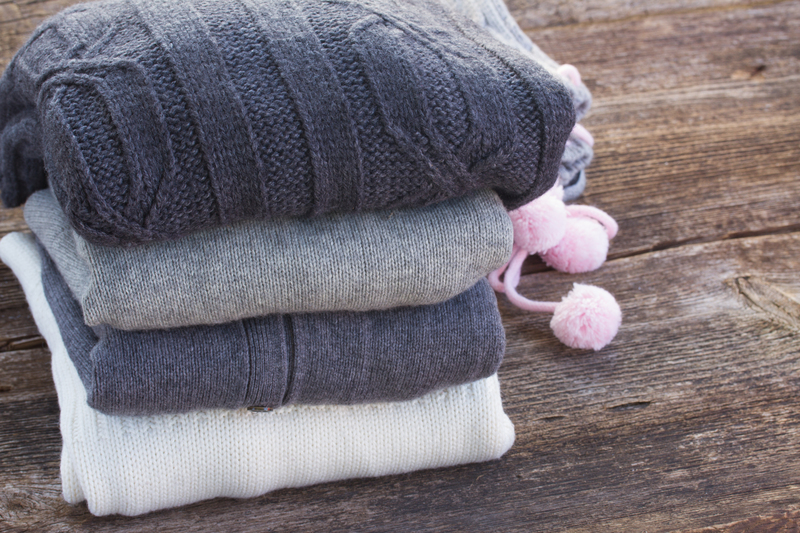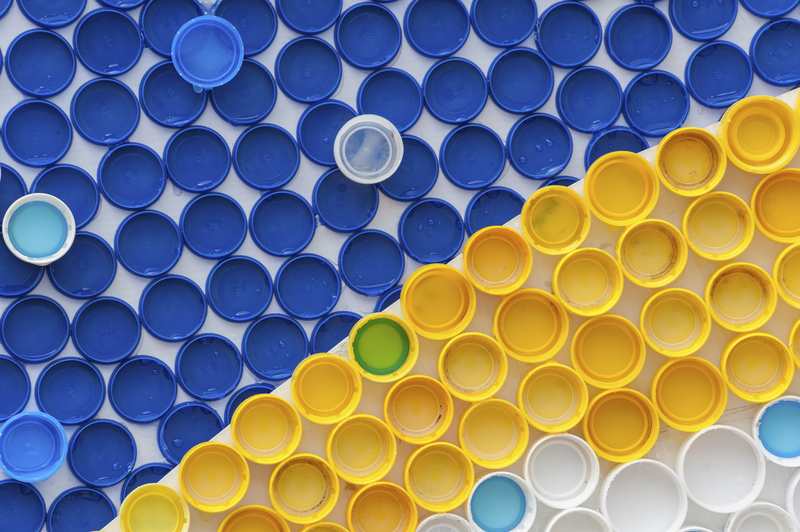From Rags to Riches: Innovative Ways to Recycle Clothes
Have you ever wondered what happens to the mountains of old clothes that people discard every year? Recycling clothes is more crucial than ever, given the environmental impact of textile waste. Today, the fashion industry is one of the fastest-growing contributors to global landfill problems. But what if you could transform your old garments into something valuable or beautiful? In this extensive guide, we'll walk you through inventive and innovative ways to recycle clothes, helping you leave a lighter environmental footprint while reaping surprising benefits.
Why Recycle Old Clothes?
Recycling clothes is not just a trend; it's a necessity. Every year, over 92 million tonnes of textile waste ends up in landfills around the world. That's the equivalent of a garbage truck full of clothes being dumped every second! The environmental impact of this waste is staggering: textiles release methane as they decompose and leach toxic dyes and chemicals into the soil and waterways.
- Conserves natural resources by reducing the need for raw materials.
- Reduces landfill waste and the pollution caused by burning synthetic fabrics.
- Saves energy compared to manufacturing new clothing materials.
- Supports communities with affordable second-hand options and job creation.

Understanding the Life Cycle of Clothing
Before diving into clever clothing recycling ideas, it's essential to understand what happens to clothes after we discard them:
- Some are resold via thrift stores or charities.
- Many are shredded for industrial rags or insulation.
- Others are recycled into new fibers for fabrics or even building materials.
- Sadly, most are sent to landfills or incinerated, causing pollution.
Innovative Ways to Recycle Clothes: Creative & Sustainable Solutions
Ready to reimagine your closet? Here are some of the most impactful and innovative ideas to recycle or upcycle clothes:
1. Upcycling: Giving Old Clothes a New Life
Upcycling is the process of transforming old, worn, or outdated clothes into new, valuable items. Unlike recycling, which breaks materials down, upcycling uses the original fabric's structure, minimizing waste and energy use.
- Denim Patchwork: Turn old jeans into patchwork bags or cushion covers by stitching together different denim swatches.
- T-Shirt Yarn: Cut worn-out t-shirts into strips to create "yarn" for knitting rugs, baskets, or even jewelry.
- Sweater Mittens: Transform thick, outgrown sweaters into cozy mittens, scarves, or hats.
- Shirt Dresses or Skirts: Re-fashion oversized shirts into trendy dresses or skirts.
- Pillow Covers and Quilts: Old shirts and blouses can be sewn into decorative pillowcases or creative quilts.
Upcycling is limited only by your imagination and basic sewing skills. It's a rewarding and eco-friendly way to recycle old clothes at home!
2. Clothing Swap Parties
Refreshing your wardrobe doesn't have to involve buying new clothes. Organize a clothing swap with friends, family, or neighbors. Each participant brings clean, gently used items they'd like to trade. This is an innovative social way to recycle clothes while keeping fashion exciting and affordable.
- Reduces waste and extends garment life.
- Gives you access to "new-to-you" styles for free.
- Builds community and encourages sustainable habits.
3. Donating to Charities and Organizations
Donation remains one of the easiest ways to recycle clothes. Many charities accept quality garments and distribute them to people in need or sell them to fund good causes.
For maximum impact:
- Only donate clean and wearable items.
- Sort clothes by season to match demand.
- Consider specialty organizations - some collect winter wear, interview outfits, or children's clothing.
Check local shelters, women's charities, or global organizations like Goodwill and Salvation Army. You might also find textile-specific recycling bins in your city.
4. Textile Recycling Services
Not all fabrics are suitable for donation. Stained, torn, or unwearable garments can still be recycled. Many municipalities and brands offer textile recycling services that process these clothes into insulation, rags, carpet padding, and even new fibers for fashion.
- Locate recycling drop-off points near you - check city websites or mapping apps.
- Major retailers like H&M, Patagonia, and Levi's offer in-store clothing recycling bins, sometimes with rewards.
- Mail-in programs exist where you ship unwanted textiles for responsible processing.
Recycling textiles ensures that even the most worn-out clothes don't end up in landfill.
5. DIY Home Projects: Repurposing Old Clothes
Don't throw away that faded t-shirt or ripped pair of jeans! Repurposing clothes for household use is both fun and practical.
- Cleaning Rags: Cut up cotton shirts for durable cleaning cloths.
- Plant Pot Holders: Use old denim or sturdy skirts as decorative pot covers.
- Potholders: Layer fabric scraps and sew together for heatproof kitchen use.
- Produce Bags: Lightweight blouses or scarves can be stitched into reusable grocery bags.
Get creative with household needs, saving money and reducing waste at the same time!
6. Art & Craft Projects
Artists across the world are embracing innovative clothing recycling as a cornerstone of their craft. Whether you're a professional or hobbyist, there's a world of possibilities:
- Textile collage and wall art
- Fabric jewelry and accessories
- Handmade dolls and plush toys
- Costume design for theater or festivals
- Weaving rugs or tapestry
Recycled clothing art is not only beautiful, but it also raises awareness about sustainable practices in the fashion industry.
7. Support Clothing Brands with Recycling Initiatives
Sustainable fashion brands are changing the game by incorporating recycled textiles into their products. Some companies also take back your used clothing, ensuring it's responsibly recycled or repurposed.
- Patagonia: Accepts their old garments for recycling into new products.
- Nudie Jeans: Repairs or recycles their jeans, turning worn pairs into rugs or new denim blends.
- Adidas: Creates sneakers and sportswear using ocean plastic and recycled fibers.
Choose to buy from brands with transparent recycling programs - it's an ethical way to promote the recycling of clothes on a larger scale.
The Circular Economy: A New Era for Clothing Recycling
The future of fashion is circular. In a circular economy, clothes are designed, produced, and consumed in ways that optimize their reuse, repair, and recycling. This innovative approach reduces resource consumption and keeps garments circulating within the system, rather than ending as waste.
Key Practices in Circular Fashion
- Designing for durability and repairability
- Offering take-back and recycling programs
- Utilizing recycled fibers in new collections
- Promoting resale, rental, and sharing models
By supporting these methods, we contribute to a future where "rags to riches" becomes the norm, not the exception.
Tips for Maximizing the Impact of Clothing Recycling
- Buy less, choose wisely: Invest in high-quality, timeless pieces that last longer.
- Care for your clothes: Proper washing and storage help garments last.
- Learn basic mending: Sew on buttons, patch holes, and hem pants to extend life.
- Recycle consciously: Sort your clothes by condition and fabric type before recycling or donating.
- Stay informed: Follow fashion news and adopt sustainable habits as trends evolve.

Challenges and Solutions in Recycling Clothes
While there are more ways to recycle worn-out clothes than ever before, certain challenges remain:
- Sorting complexity: Mixed-material items (e.g., polyester-cotton blends) are harder to recycle.
- Limited local facilities: Not all regions have textile recycling plants or drop-off points.
- Consumer awareness: Many still discard clothes out of habit or convenience.
The solution? Advocate for better infrastructure, educate your community, and support innovation in textile recycling technologies.
Conclusion: From Rags to Riches - Your Role in Sustainable Fashion
Recycling clothes is about much more than discarding old t-shirts or jeans. It's an opportunity to spark creativity, support communities, protect the environment, and shape the future of fashion.
- Embrace upcycling and innovative recycling practices at home.
- Encourage friends and family to join clothing swaps or donate regularly.
- Support brands with true circular fashion programs.
Your journey from rags to riches starts in your wardrobe. Every small action - from repairing a button to hosting a clothing swap or seeking out creative upcycling ideas - helps build a more sustainable world. Let's make the change together, one garment at a time.
FAQs About Recycling Clothes
- What types of clothes can be recycled? Most textiles, including cotton, wool, polyester, and denim, can be recycled, provided they are clean. Mixed-fiber garments may need special handling.
- Can I recycle underwear or socks? Many textile recycling programs accept worn underwear, socks, and even shoes if they are clean. Check local guidelines.
- Where can I find clothing recycling bins? Local council websites, waste management apps, or large retailers often list collection points for textile recycling.
- What if my clothes are too damaged to donate? Repurpose them for your household or find a textile recycling program that recycles unusable items into industrial products.
Turn your old clothes from rags to riches by transforming waste into opportunity - for yourself, your community, and the planet.